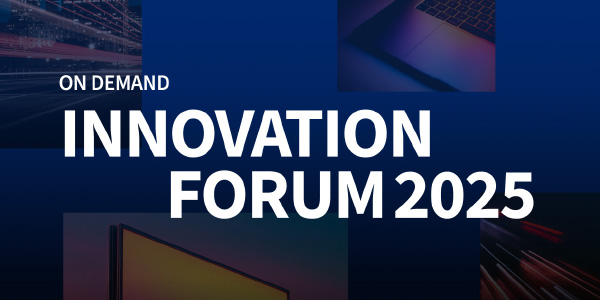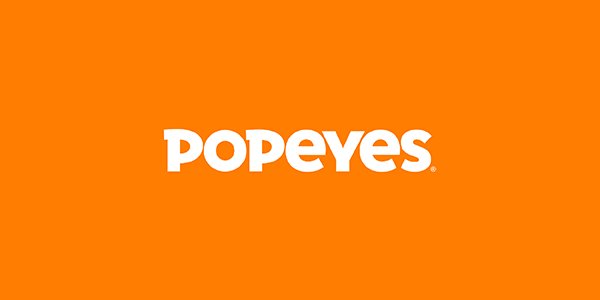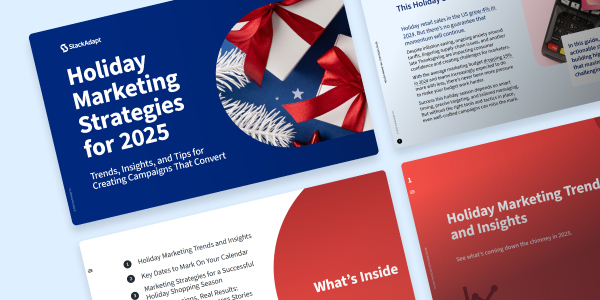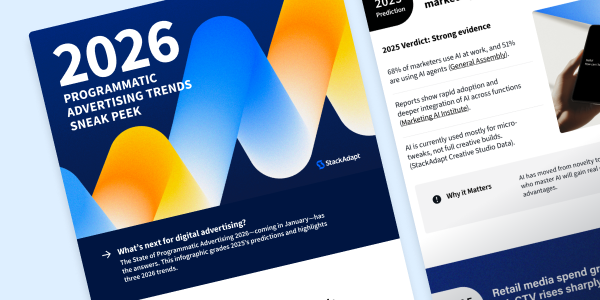The AI Advertising Podcast: S1
Episode 10
Building AI Workflows That Actually Work
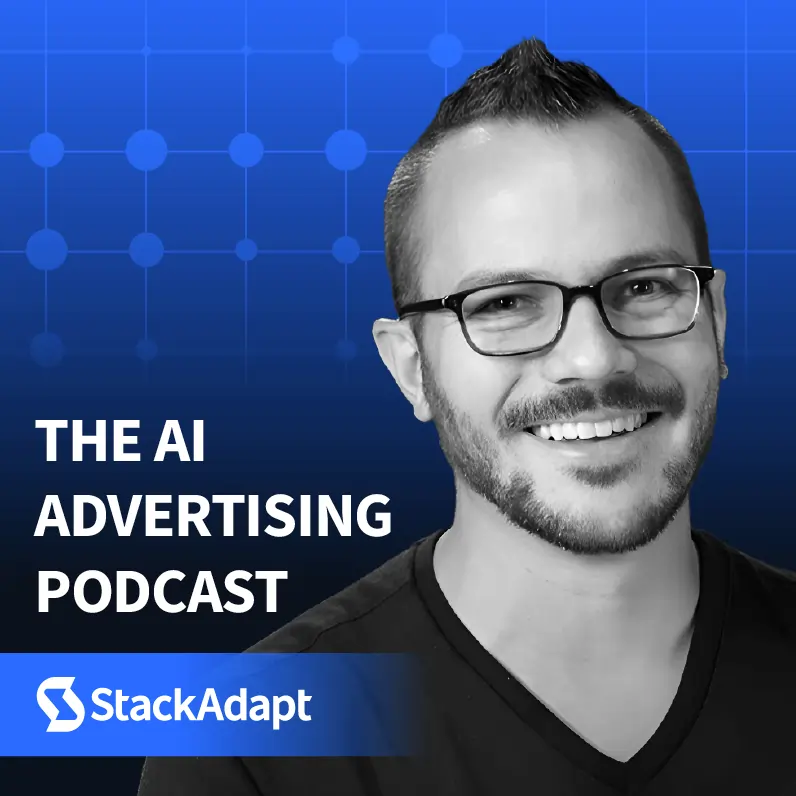
About This Episode
More than 80% of marketers and creatives are using generative AI today—and 40% rely on it from start to finish. But for many teams, AI still feels like a gimmick, or worse, a source of friction. Why?
In this episode, we unpack the real reasons AI workflows fail—and what it takes to build ones that actually save time, improve quality, and scale with your business.
Matt Travers | Managing Director, BRAIVE
Dan Sanchez | Senior AI Marketing Strategist, Social Media Examiner
Transcript
Diego Pineda (00:00:00)
If you’ve ever tried to “add AI” to your marketing workflows, you’ve probably run into one of two problems. Either it felt like a novelty with no real business impact, or it worked for a while, then broke when the process changed.
Why? Because we’ve been treating AI as a bolt-on tool rather than a system-wide design question. 80% of marketers and creatives across industries like advertising, education, and HR are already using generative AI in some part of their workflow, and 40% are now relying on it from start to finish, according to Wondercraft’s AI in Content Creation 2025 report. These aren’t just one-off tools either. Most creators use at least three genAI tools to move from script to final video, tapping platforms like ChatGPT, Canva, ElevenLabs, and VEED.
Today, we’re diving into how marketing teams are using AI workflows to streamline operations, boost creativity, and make smarter decisions. Our guests are two leaders who are building these systems in real-time. Matt Travers, Managing Director at BRAIVE, an AI advisory and implementation firm based in Australia. And Dan Sanchez, Senior AI Marketing Strategist at Social Media Examiner and host of the AI-Driven Marketer podcast. So let’s get started.
Podcast Intro (00:01:26)
Welcome to the AI Advertising Podcast, brought to you by StackAdapt. I’m your host, Diego Pineda. Get ready to dive into AI, Ads, and Aha moments.
Diego Pineda (00:01:40)
Before we dive into workflows and automation, we need to address something that’s confusing a lot of marketing teams right now: the AI landscape is noisy. There are shiny tools everywhere—each promising to revolutionize your marketing. But behind the glossy landing pages, many are half-baked or too narrow to deliver real value.
Matt Travers has seen this up close while advising brands on implementation. He says the AI industry has done a great job selling the dream, but not always delivering the reality.
Matt Travers (00:02:13)
The AOI industry, if you will, has done an incredible job at marketing itself. But to a fault. So all these flashy tools and shiny products are coming out left, right and center, but a lot of them are undercooked. So all of these marketers and advertisers and media professionals, you know, often will sign up to them being sold the dream, integrate them with their tech stack… but then once they get under the hood, the tool isn’t really fit for purpose, or it only kind of does 10% of what they got sold that it does.
Diego Pineda (00:02:46)
That’s why it helps to zoom out and get clear on what AI is actually good at today—and how to think about its role inside your team. Dan Sanchez breaks this down with a simple but powerful framework: five types of AI for marketing. At the centre is your “co-pilot”—a tool that helps you think, ideate, and get unstuck. Everything else builds from that core.
Dan Sanchez (00:03:11)
I find that there are five different types of AI marketing. There’s co-pilot. There’s for content creation. There’s hyper-personalization, conversational marketing, and analysis and forecasting. Those are the five types. The most important one is your co-pilot. Everything else is really an extension of that one in the center. If you were to make a diagram of it, the one is surrounded by the four. But having that co-pilot to get you unstuck, because obviously you can use a co-pilot for all kinds of things, and you can use it to create all kinds of content too.
Diego Pineda (00:03:43)
So before chasing new tools, ask yourself: Do I have a co-pilot in place? A thinking partner that helps your team move faster, make better decisions, and stay strategic? Because in this AI moment, clarity beats novelty every time.
Diego Pineda (00:04:01)
AI is a powerful tool for reclaiming time. But knowing where to start is key. What do you automate first? I asked both Matt and Dan to break it down.
Matt Travers (00:04:12)
A really good question is, what’s really painful for you? That’s typically where there’s smoke, there’s fire kind of vibes. And you can go down the path of unlocking that and figuring out why is it painful, where it hurts, kind of pressing it, seeing where it breaks, where it doesn’t break, and then going down that path of helping them automate that. They typically are very narrow use cases depending on the business, which is not a bad thing by any measure, but there’s equally a lot of things that can apply to any business or a majority of businesses that people are still kind of doing the stone age version of. So I think contracts, think invoicing, think, you know, even elements of marketing. So that’s kind of the area of AI hygiene, helping brands get up to, but then looking at various narrow use cases of this business has process X, Y, Z, which takes them currently, you know, four hours a day, maybe. How do we get that four hours down to four minutes for them?
A recent client that I worked with surveyed their entire organization. And it is interesting because people on the front lines delivering and doing the actual work have very different conceptions around where AI should be integrated than the C-suite. But an example would be there was a process that about 10 of their staff had to do each week, which took them… 10 minutes per time they did it, but they did it 75 times in a week. So you do the math on that, it’s roughly about 11 hours in a week or somewhere around there. We implemented some automation, a combination of off-the-shelf and some custom-built solutions, which took that 10 minutes per process down to one minute. So, then over the course of a year, that unlocks roughly about three months of time for them.
Dan Sanchez (00:06:06)
There’s two things that come to mind. One is what’s the biggest bottleneck for you personally, or if you’re working in a team, what’s the biggest bottleneck for your team? Cause that’s where the highest ROI is going to be. Cause if you can figure that out and have AI solve even a piece of it, man, that’s to be good. I mean, but that was true of automation in general, right? So like, that’s not even unique to AI, but AI… Like there’s only so many things automation can do. AI has opened up automation, do all kinds of new things. Like I was a huge Infusionsoft guy. Like I freaking automated a whole college admission systems with that app. It was nuts.
But there’s a point to where you can only like use variables so much in the automation. You can only Madlib your email so much to be personalized. With ChatGPTs stuck into your CRM, all of a sudden, there are whole new possibilities of automatic analysis, of customization, of new workflows that are possible for you.
So start with the biggest bottleneck. Or just start with the thing that it’s, maybe it’s not a bottleneck, but it just takes a lot of time. Like how much time can you get back if you’re not having to do that one thing every day or every week, if you automate that, it frees you up to work on some crazy stuff.
Diego Pineda (00:07:11)
Dan points out something we can all relate to: much of marketing is repetitive, mechanical, and ripe for automation. And with the right AI setup, even high-value workflows like podcast content creation can be streamlined.
Dan Sanchez (00:07:25)
Like one thing that I hated… because podcasting is kind of a, there’s a lot of steps to podcast and you got to go recruit the person. Sometimes you do a pre-interview, sometimes not, sometimes you just jump on. You’ve got to record, you’ve got to edit, you’ve got to publish. But after that, after you record it and schedule it, maybe you spend some time on the thumbnail. You’re like, okay, well, it published. Now I got to upload it to YouTube. Now I got to slice it into clips. Now I got to, you know, turn it into a blog post because the transcripts is so powerful. If I plug it into even just some custom GPTs, but then even if you can build a custom GPT that takes your transcripts and turns it into blog posts, it’s so much copy-paste work. And I feel like in ah marketing, so much of our time is like data entry. Have you noticed that as a marketer? Like we’re all data entries. Like we have a little bit of strategy and then it’s a lot of data entry, especially with AI. We’re like copying and pasting everywhere. But I made an automation to like take my podcast. And as soon as it hits the RSS feed, uploads it to YouTube, sets the YouTube thumbnail graphic, adds it to the playlist, takes the transcript out Zencaster, writes a blog post, uploads it to WordPress with the YouTube video on top. And then the blog post underneath actually sets the right category there. Actually takes the transcript and then turns it into multiple social show posts that get loaded into a database for me to come grab later. I’d like it if it posted automatically too, but I find that those need more checking. The blog post does. But I love that that automation happens for my podcast. I don’t even have to think about it. I wake up in the morning, the podcast is out, blog post is done, everything’s published, everything’s looking good. Now I don’t have to think about that process anymore. It’s been automated. Distribution is done.
Diego Pineda (00:09:00)
In summary, effective AI automation is about identifying the biggest drags on your time and energy. And ironically, that still requires some human strategic thinking.
Diego Pineda (00:09:13)
Once marketers understand what they want to automate or accelerate, the next big question is: what tools should we use? Should we buy something off the shelf? Build something custom? Or are we missing capabilities in the tools we already use?
It’s a bigger decision than it looks. Matt says that while off-the-shelf tools can be fast and easy, they’re often too generic. If you’re solving a narrow, high-value problem, custom might actually be quicker and more effective.
Matt Travers (00:09:43)
There’s no one size fits all. In terms of tools in the language model space, there’s a bunch of categories that all the language models are scored on. So depending on what your role is, creative writing compared to coding, for example, would be a very different answer in terms of which LLM you use, but then you need to sift through the the noise of the industry because every day, there’s hundreds of headlines about which LLM is better in which category often at times published by themselves. So you need to really dig through and sift through the noise about that. I would buy in regards to, depending on what your resource is and budget, because a lot of people have a misconception that AI is free and AI is very quick to implement. If you buy off the shelf, that seems somewhat more true, not so much the free part. But the buying off the shelf a SaaS based product or something typically is one of those problems that applies to a lot of different businesses, whether it’s, you know, automatic contracts or invoicing, whatever it could be. Very rarely have I found an off-the-shelf product that is going to solve a very narrow business problem. So that’s when I would consider building because by the time it takes you to build it, test it, iterate and launch is almost always going to be quicker than, emailing for the 29th time your account rep, when is this on the roadmap? When is it going to get released?
Diego Pineda (00:11:07)
That’s a common trap: defaulting to off-the-shelf because it feels faster. But Matt’s point is worth pausing on—if a tool doesn’t fit your workflow, the cost isn’t just money. It’s weeks—or even months—of misalignment, workarounds, and endless emails to product support.
Dan offers another take. He says many marketers are chasing shiny tools, when the most powerful AI feature might already be in the tools they’re using every day.
Dan Sanchez (00:11:35)
People aren’t looking in the right places. They’re chasing fancy. Fancy will just get you lost. That’s a never-ending chase. Fancy is where people burn out because fancy is usually not incredibly useful. Sometimes it is, but usually not.
I think what’s most underrated right now is an AI tool, whatever marketing and CRM you use. If there’s an AI tool built into their journey builder, or their workflow, whatever their automation tool is called in that CRM, that’s probably the most underrated place for AI right now. Personally, I use HighLevel. They’re really pushing hard into this AI thing. But like HubSpot like can do this stuff too. If you can inject AI into marketing automation tools like that, then you could be doing a lot more there, with your contacts for your contacts.
Diego Pineda (00:12:19)
In other words, don’t overlook the obvious. Your CRM or automation platform may already have AI baked into its journey builder or email workflows. And if you’re not tapping into that, it doesn’t matter how advanced your stack gets.
Diego Pineda (00:12:36)
Before you add another AI tool to your tech stack, pause and ask: What’s the real problem we’re solving? The most effective AI implementations start with friction—those tasks that are time-consuming, repetitive, or inconsistent. That’s where automation delivers the highest ROI.
Second, think systems, not shortcuts. A co-pilot mindset—using AI as a thought partner, not just a task-doer—can help your team move faster and stay strategic. It’s not about replacing your team’s creativity, but amplifying it across workflows.
Third, don’t overlook what you already have. Whether it’s your CRM, email platform, or automation suite, chances are there are underused AI capabilities already sitting in your stack. Start there before shopping for the next shiny tool.
And finally, remember that AI workflows aren’t one-size-fits-all. Some solutions require off-the-shelf simplicity. Others demand custom builds. The key is alignment between the problem, the process, and the people using it.
Building effective AI workflows isn’t about doing everything with AI. It’s about using AI to free up your team to do the things only they can.
Podcast Outro (00:13:54)
Thanks for listening to this episode of The AI Advertising Podcast. This podcast is produced by StackAdapt. Visit us at stackadpat.com for more information about using AI in your advertising campaigns. If you liked what you heard, remember to subscribe, and we’ll see you next time.
